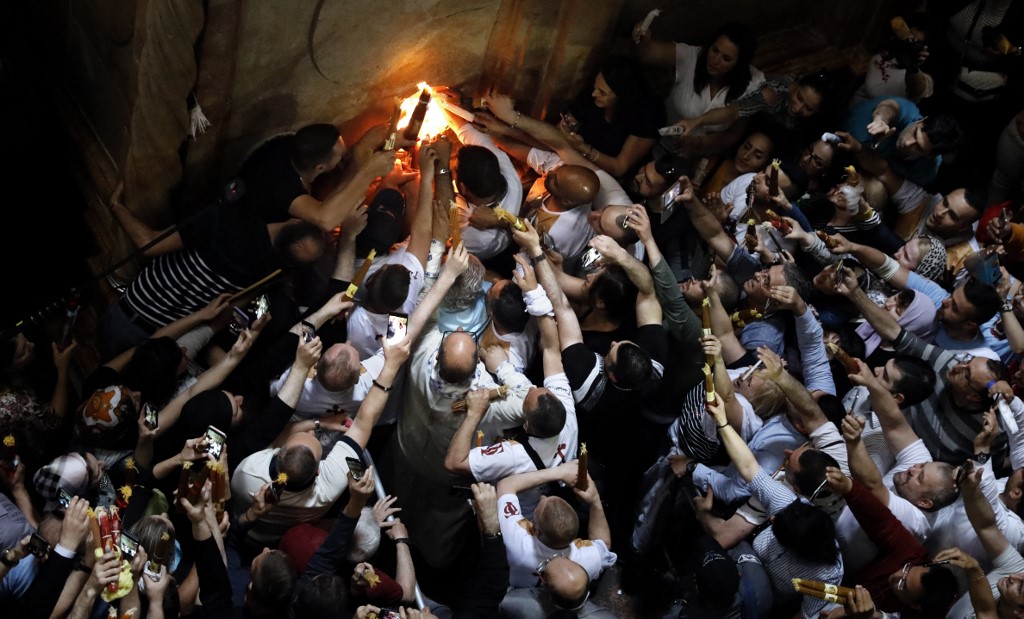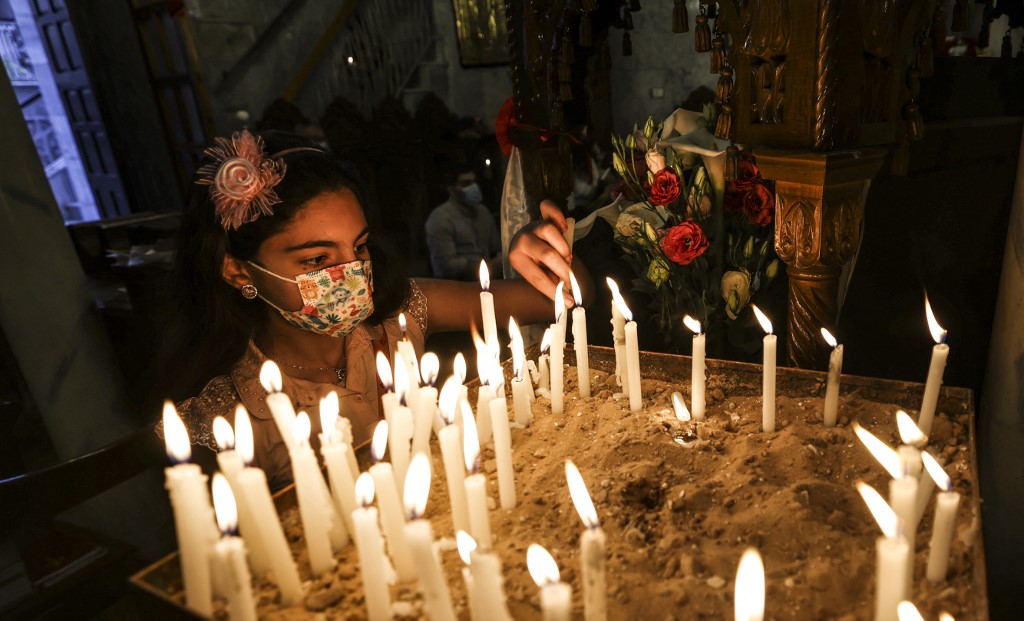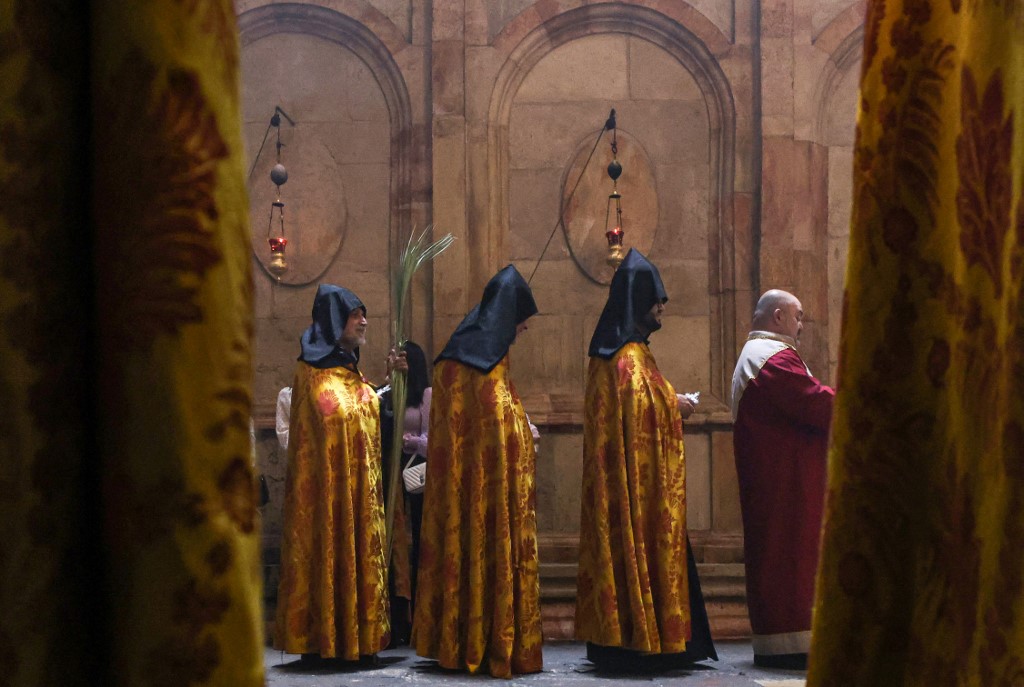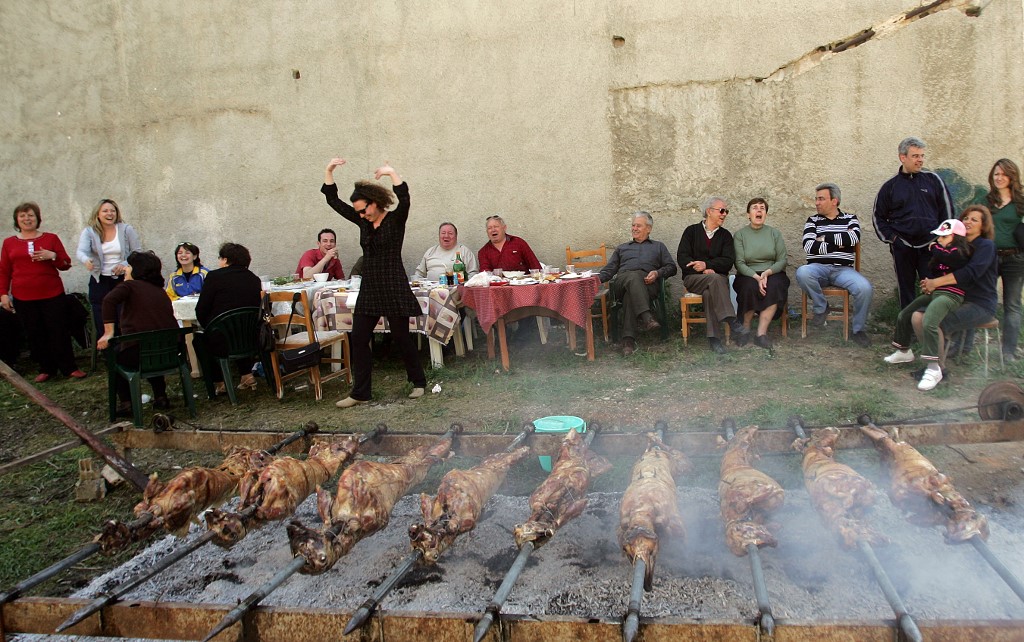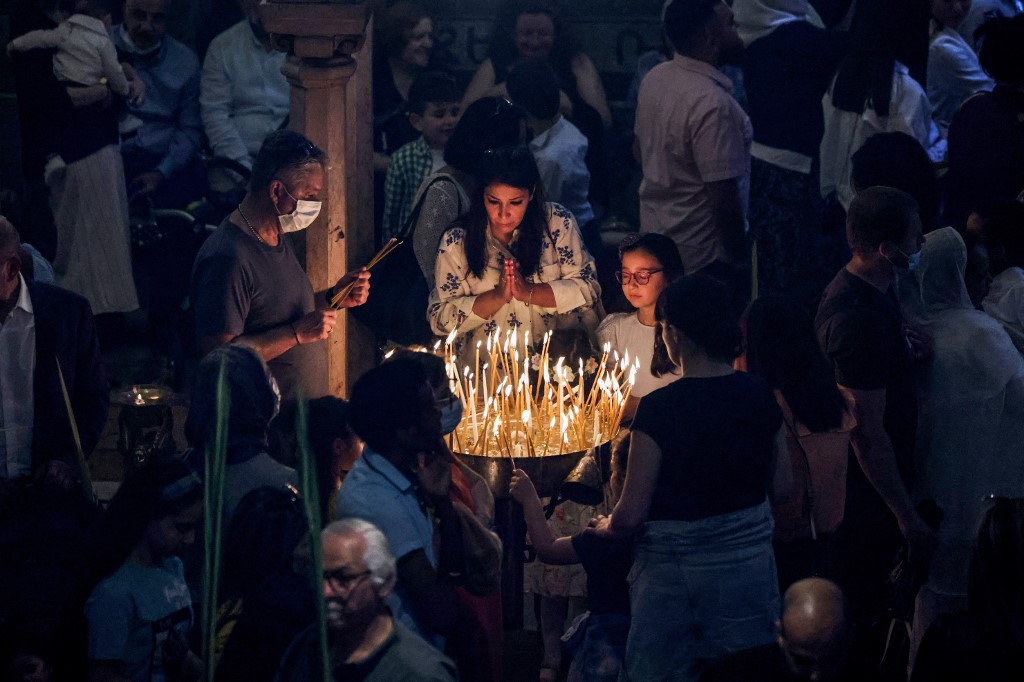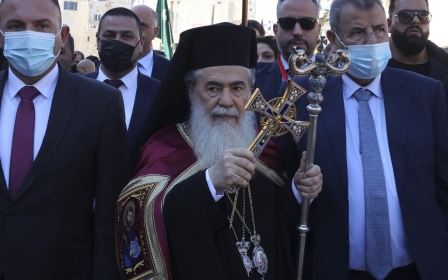Orthodox Easter: Middle Eastern Christianity's festival explained

For most Christians, Easter is one of the year's most important religious festivals, marking the crucifixion and subsequent resurrection of Jesus.
The occasion is marked across the world, with most following the Roman Catholic church or belonging to Protestant denominations celebrating Easter a week before most of their Orthodox counterparts.
New MEE newsletter: Jerusalem Dispatch
Sign up to get the latest insights and analysis on Israel-Palestine, alongside Turkey Unpacked and other MEE newsletters
A time of spiritual reflection and some festivity, even for the non-practising the holiday period is a chance to reconnect with family members and friends.
For most believers, the holiday represents the defining episode in the formation of the Christian faith and is packed with motifs and symbolism, such as the idea of redemption and rebirth.
Orthodox Easter is associated primarily with the "Eastern" world, which includes parts of the Middle East, Greece, Russia and Serbia, and is marked slightly differently to the way it is celebrated in other parts of the world.
Here, Middle East Eye takes a look a closer look at Orthodox Easter:
What is Orthodox Easter and when is it marked?
Orthodox Easter is a Christian celebration that marks the resurrection of Jesus after his crucifixion by the Romans. The event is considered one of the most important events in the religion.
For Christians, the exact date of Easter changes every year because Easter is always celebrated on the first Sunday after the first full moon that follows the spring equinox.
It's association with the spring season, as well as the story of the resurrection, symbolise the motif of rebirth and new life.
Many Orthodox Christian churches, including those in Jerusalem, Egypt, Greece, Russia, Serbia and Ukraine, use the Julian calendar, which is based on the time it takes the Earth to go around the Sun and was widely used in the western world before the 16th century.
Today, most western churches use the Gregorian calendar, a modified version of the Julian calendar.
This year, Easter for those who follow the Gregorian calendar was observed on Sunday 17 April, since the first full moon to occur after the Spring Equinox is on 20 March. However, Orthodox Easter will fall on Sunday 24 April.
In 2023, Easter Sunday will be marked on 9 April in the Gregorian calendar and 16 April in the Orthodox Julian calendar.
In the Christian faith, the full moon of Spring is known as the "Paschal Full Moon," which comes from the Aramaic word for "Passover".
How is Easter marked?
For Orthodox Christians, preparations for Easter Sunday start long before the day itself and for many that could mean weeks before.
The most faithful will typically take part in Lent, which involves 40 days of fasting from specific foods as well as time spent reflecting on their faith.
According to Christian tradition, the practice stems from the 40 days Jesus spent in the desert fasting and refusing the temptations offered to him by Satan.
The start of Lent is known as Clean Monday, or Ash Monday, and gets its name from the leaving behind of any sinful behaviours, attitudes, or foods that will be given up for Lent.
Some Christians will give up items they like to overindulge in, such as chocolate or sweet treats, while Orthodox Christians, especially, abstain from meat, meat by-products, poultry, eggs, and dairy products for the entire Lent period.
The period of fasting is aimed at encouraging Christians refocus spiritually and prepare for the important event ahead, which is the festival of Easter.
For Orthodox Christians, Lent ends on Lazarus Saturday, which is eight days before Easter Sunday, and is named after Saint Lazarus, a friend of Jesus, who he is believed to have been resurrected from his tomb after lying there dead for four days.
What happens after Lent?
After Lent comes Palm Sunday, which is the first day of Holy week and marks one week before Easter and the final week of Christ's life before his death and resurrection.
The day represents when Jesus arrived in Jerusalem for the Jewish holiday of Passover and the start of the events that would lead to his arrest by the Romans.
Symbolising the palms waved at Jesus to welcome him to Jerusalem, churches often give out palm leaves to worshippers.
Palm Sunday is followed by Holy Monday and Tuesday, when followers remember the final teachings Jesus gave to his disciples. Holy Wednesday is when Orthodox Christians observe the Sacrament of Holy Unction for the forgiveness of sin and the healing of the soul and body. It also marks the moment Mary Magdalene anointed Christ's feet with oil and myrrh.
Holy Thursday is the day Christians believe the Last Supper took place, and the faithful will go to church and take part in the practice of Holy Communion marking the moment when Jesus offers his disciples bread and wine, which he said were his body and blood.
Two church services typically take place on Holy Friday, marking the last moments of Christ's life as well as a celebration of the joyous end of Lent. The Easter Vigil, also known as the Paschal Vigil, will also take place, marking the first celebration of the resurrection of Jesus.
How is the schedule of Orthodox Easter different?
There are some slight differences between how Easter is celebrated in the Gregorian calendar compared with the Orthodox calendar.
In the Gregorian calendar, Lent starts on Ash Wednesday rather than on Clean Monday,
Ash Wednesday gets its name from the traditional blessing associated with the ashes which come from the burning of palm branches from the previous year’s Palm Sunday celebrations. During some church services, the ashes are used to mark a cross on a worshippers' foreheads.
The final day before Ash Wednesday is known as Shrove Tuesday, or Pancake Day in the UK, as this is typically when people would empty their homes of any items in preparation for Lent, leaving only basic and simple ingredients.
Another key difference between the way in which Orthodox Easter is celebrated is that, in the Orthodox Church, Easter must take place only after the Jewish festival of Passover, as they believe that Jesus celebrated Passover before his death.
What do people eat during Orthodox Easter?
While chocolate Easter eggs and hot-cross buns are popular in the UK and other countries that follow the Gregorian calendar during Easter, other countries have their own traditional Easter staples.
For example, in Greece, Orthodox Christians will eat a spit-roast lamb, stuffed vine leaves and Greek Easter bread.
In the Middle East, a leg of lamb is typically roasted, to be enjoyed along with boiled eggs, date-nut bread, maamoul (a date- or nut-stuffed shortbread-like biscuit), and fattah.
Dyed Easter eggs, of the chicken rather than the chocolate variety, are also served in some countries, such as in Palestine.
What are some orthodox Easter traditions?
In Jerusalem, people will gather to witness and take part in the Holy Fire ceremony at the Church of Holy Sepulchre, to see the flame they believe appeared at the tomb of Jesus.
At the ceromony, it is customary for Christians to light candles at the site, where they believe Jesus was buried and rose from the dead after being crucified.
Within the church, prayers are chanted; outside, a parade will take place with the banging of drums and people carrying crucifixes. The parade is then taken to other Orthodox countries, such as Greece, Serbia and Russia, where it is received by dignatories.
Is it a public holiday?
In countries that follow the Gregorian calendar, such as the UK, Easter is traditionally a public holiday, with schools giving students an almost two-week long break. However, Orthodox Easter is not a designated public holiday.
In Lebanon, Orthodox Easter is a public holiday, as is the case with other countries including, Bulgaria, Greece, Romania and Russia.
In Egypt, Easter is part of a wider spring festival called "Sham el-Nessim" and is a national holiday.
Middle East Eye delivers independent and unrivalled coverage and analysis of the Middle East, North Africa and beyond. To learn more about republishing this content and the associated fees, please fill out this form. More about MEE can be found here.


